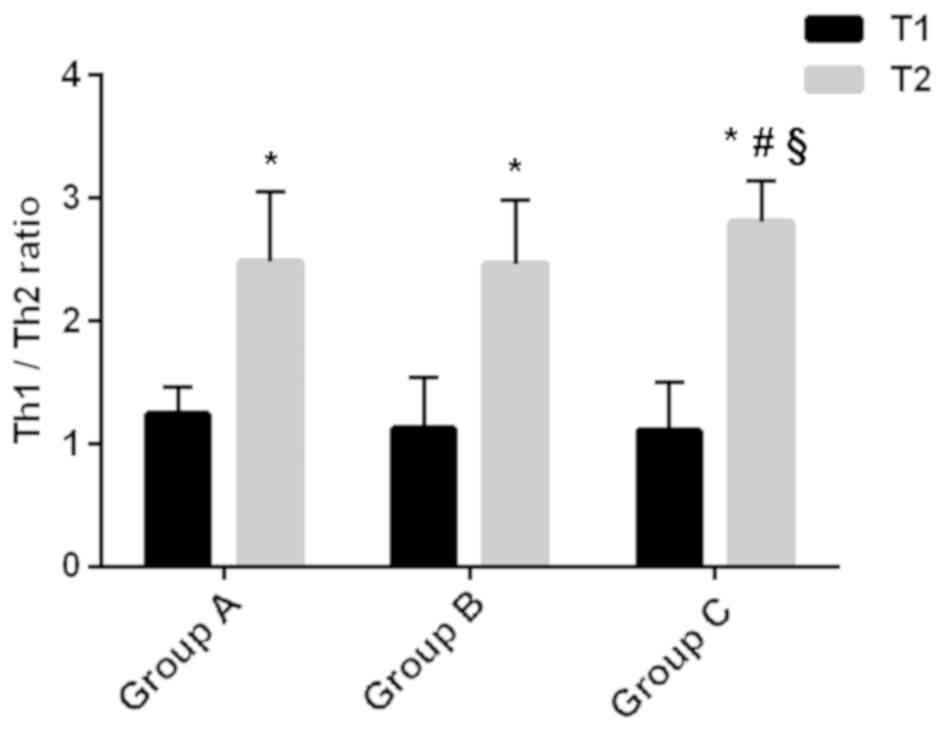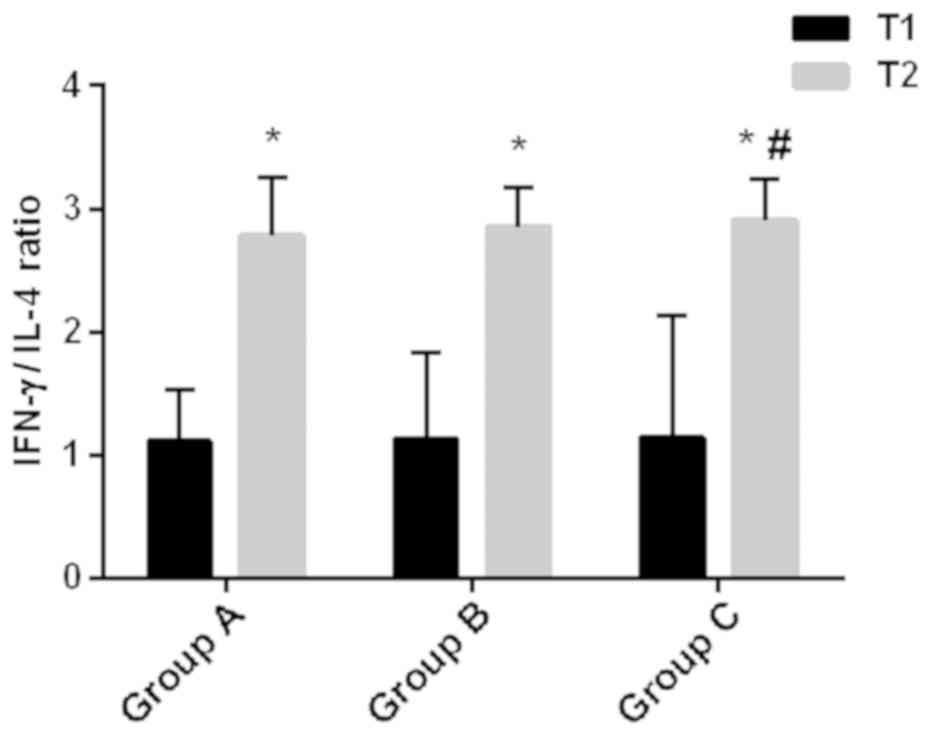|
1
|
Altenburg JD, Harvey KA, McCray S, Xu Z
and Siddiqui RA: A novel 2,6-diisopropylphenyl-docosahexaenoamide
conjugate induces apoptosis in T cell acute lymphoblastic leukemia
cell lines. Biochem Biophys Res Commun. 411:427–432. 2011.
View Article : Google Scholar : PubMed/NCBI
|
|
2
|
Bertolizio G, Stucchi R, Sahillioglu E,
Somaini M, Dander E, Biondi A, Jankovic M, D'Amico G and Ingelmo
PM: The effects of propofol and ketamine on the cytokine levels of
children with acute lymphoblastic leukemia. J Pediatr Hematol
Oncol. 35:e296–e300. 2013. View Article : Google Scholar : PubMed/NCBI
|
|
3
|
Luczyński W, Stasiak-Barmuta A,
Krawczuk-Rybak M, Malinowska I, Matysiak M, Mitura-Lesiuk M,
Kowalczyk J and Jeromin A: Th1/Th2 balance in acute lymphoblastic
leukemia in children. Przegl Lek. 61:919–923. 2004.(In Polish).
PubMed/NCBI
|
|
4
|
Moorman AV, Harrison CJ, Buck GA, Richards
SM, Secker-Walker LM, Martineau M, Vance GH, Cherry AM, Higgins RR,
Fielding AK, et al Adult Leukaemia Working Party, Medical Research
Council/National Cancer Research Institute, : Karyotype is an
independent prognostic factor in adult acute lymphoblastic leukemia
(ALL): Analysis of cytogenetic data from patients treated on the
Medical Research Council (MRC) UKALLXII/Eastern Cooperative
Oncology group (ECOG) 2993 trial. Blood. 109:3189–3197. 2007.
View Article : Google Scholar : PubMed/NCBI
|
|
5
|
Nicolini FE, Mauro MJ, Martinelli G, Kim
DW, Soverini S, Müller MC, Hochhaus A, Cortes J, Chuah C, Dufva IH,
et al: Epidemiologic study on survival of chronic myeloid leukemia
and Ph(+) acute lymphoblastic leukemia patients with
BCR-ABL T315I mutation. Blood. 114:5271–5278. 2009. View Article : Google Scholar : PubMed/NCBI
|
|
6
|
Glaisyer HR and Sury MR: Recovery after
anesthesia for short pediatric oncology procedures: Propofol and
remifentanil compared with propofol, nitrous oxide, and
sevoflurane. Anesth Analg. 100:959–963. 2005. View Article : Google Scholar : PubMed/NCBI
|
|
7
|
Hajdenberg J, Grote T, Yee L,
Arevalo-Araujo R and Latimer LA: Infusion of palonosetron plus
dexamethasone for the prevention of chemotherapy-induced nausea and
vomiting. J Support Oncol. 4:467–471. 2006.PubMed/NCBI
|
|
8
|
Maurizi P, Russo I, Rizzo D, Chiaretti A,
Coccia P, Attinà G, Ruggiero A and Riccardi R: Safe lumbar puncture
under analgo-sedation in children with acute lymphoblastic
leukemia. Int J Clin Oncol. 19:173–177. 2014. View Article : Google Scholar : PubMed/NCBI
|
|
9
|
Godambe SA, Elliot V, Matheny D and
Pershad J: Comparison of propofol/fentanyl versus
ketamine/midazolam for brief orthopedic procedural sedation in a
Pediatric Emergency Department. Pediatrics. 112:116–123. 2003.
View Article : Google Scholar : PubMed/NCBI
|
|
10
|
Chiaretti A, Ruggiero A, Barone G,
Antonelli A, Lazzareschi I, Genovese O, Paiano S, Sammartino M,
Maurizi P and Riccardi R: Propofol/alfentanil and propofol/ketamine
procedural sedation in children with acute lymphoblastic leukaemia:
Safety, efficacy and their correlation with pain neuromediator
expression. Eur J Cancer Care (Engl). 19:212–220. 2010. View Article : Google Scholar : PubMed/NCBI
|
|
11
|
Lim JA, Oh CS, Yoon TG, Lee JY, Lee SH,
Yoo YB, Yang JH and Kim SH: The effect of propofol and sevoflurane
on cancer cell, natural killer cell, and cytotoxic T lymphocyte
function in patients undergoing breast cancer surgery: An in vitro
analysis. BMC Cancer. 18:1592018. View Article : Google Scholar : PubMed/NCBI
|
|
12
|
Chen Y, Liang M, Zhu Y and Zhou D: The
effect of propofol and sevoflurane on the perioperative immunity in
patients under laparoscopic radical resection of colorectal cancer.
Zhonghua Yi Xue Za Zhi. 95:3440–3444. 2015.(In Chinese). PubMed/NCBI
|
|
13
|
Whitlow PG, Saboda K, Roe DJ, Bazzell S
and Wilson C: Topical analgesia treats pain and decreases propofol
use during lumbar punctures in a randomized pediatric leukemia
trial. Pediatr Blood Cancer. 62:85–90. 2015. View Article : Google Scholar : PubMed/NCBI
|
|
14
|
Tan R: Effect of propofol and isoflurane
on surgical stress response and postoperative cognitive function in
elderly patients. Nan Fang Yi Ke Da Xue Xue Bao. 29:1247–1248.
2009.(In Chinese). PubMed/NCBI
|
|
15
|
Flouda L, Pandazi A, Papageorgiou C,
Perrea D, Krepi E and Kostopanagiotou G: Comparative effects of
sevoflurane and propofol based general anaesthesia for elective
surgery on memory. Arch Med Sci. 9:105–111. 2013. View Article : Google Scholar : PubMed/NCBI
|
|
16
|
Piotrowski AJ and Fendler WM: Hyperkalemia
and cardiac arrest following succinylcholine administration in a
16-year-old boy with acute nonlymphoblastic leukemia and sepsis.
Pediatr Crit Care Med. 8:183–185. 2007. View Article : Google Scholar : PubMed/NCBI
|
|
17
|
Panwar P, Singh S, Kumar N, Rawat H and
Mishra AK: Synthesis, characterization, and in vivo skeletal
localization of a new (99m)Tc-based multidentate phosphonate
chelate: 5-Amino-1,3-bis(ethylamine-(N,N dimethyl diphosphonic
acid) acetamido) benzene. Bioorg Med Chem. 15:1138–1145. 2007.
View Article : Google Scholar : PubMed/NCBI
|
|
18
|
Neuhäuser C, Wagner B, Heckmann M, Weigand
MA and Zimmer KP: Analgesia and sedation for painful interventions
in children and adolescents. Dtsch Arztebl Int. 107:241–247, I–II,
I. 2010.PubMed/NCBI
|
|
19
|
Mozhaev GA and Kraevaia SB: Non-specific
cellular immunity in tonsillectomies in children under general
anesthesia. Anesteziol Reanimatol. 4:36–39. 1981.(In Russian).
|
|
20
|
Kwak Y, Koh J, Kim DW, Kang SB, Kim WH and
Lee HS: Immunoscore encompassing CD3+ and
CD8+ T cell densities in distant metastasis is a robust
prognostic marker for advanced colorectal cancer. Oncotarget.
7:81778–81790. 2016. View Article : Google Scholar : PubMed/NCBI
|
|
21
|
Zhang Y, Zhang X, Xia Y, Jia X, Li H,
Zhang Y, Shao Z, Xin N, Guo M, Chen J, et al: CD19+
Tim-1+ B cells are decreased and negatively correlated
with disease severity in Myasthenia Gravis patients. Immunol Res.
64:1216–1224. 2016. View Article : Google Scholar : PubMed/NCBI
|
|
22
|
Viallard JF, Pellegrin JL, Ranchin V,
Schaeverbeke T, Dehais J, Longy-Boursier M, Ragnaud JM, Leng B and
Moreau JF: Th1 (IL-2, interferon-gamma (IFN-gamma)) and Th2 (IL-10,
IL-4) cytokine production by peripheral blood mononuclear cells
(PBMC) from patients with systemic lupus erythematosus (SLE). Clin
Exp Immunol. 115:189–195. 1999. View Article : Google Scholar : PubMed/NCBI
|
|
23
|
Ziegler A, Heidenreich R, Braumüller H,
Wolburg H, Weidemann S, Mocikat R and Röcken M: EpCAM, a human
tumor-associated antigen promotes Th2 development and tumor immune
evasion. Blood. 113:3494–3502. 2009. View Article : Google Scholar : PubMed/NCBI
|
|
24
|
Xia N, Zhou S, Liang Y, Xiao C, Shen H,
Pan H, Deng H, Wang N and Li QQ: CD4+ T cells and the
Th1/Th2 imbalance are implicated in the pathogenesis of Graves'
ophthalmopathy. Int J Mol Med. 17:911–916. 2006.PubMed/NCBI
|
|
25
|
Gore AJ, Deitz SL, Palam LR, Craven KE and
Korc M: Pancreatic cancer-associated retinoblastoma 1 dysfunction
enables TGF-β to promote proliferation. J Clin Invest. 124:338–352.
2014. View
Article : Google Scholar : PubMed/NCBI
|
|
26
|
Hattori K, Nishikawa M, Watcharanurak K,
Ikoma A, Kabashima K, Toyota H, Takahashi Y, Takahashi R, Watanabe
Y and Takakura Y: Sustained exogenous expression of therapeutic
levels of IFN-gamma ameliorates atopic dermatitis in NC/Nga mice
via Th1 polarization. J Immunol. 184:2729–2735. 2010. View Article : Google Scholar : PubMed/NCBI
|
|
27
|
Li AL, Ma DX and Meng XC: Effect of
lactobacilli on Th1/Th2 cells balance in primary lymphocytes. Xi
Bao Yu Fen Zi Mian Yi Xue Za Zhi. 27389–391. (394)2011.(In
Chinese). PubMed/NCBI
|
















